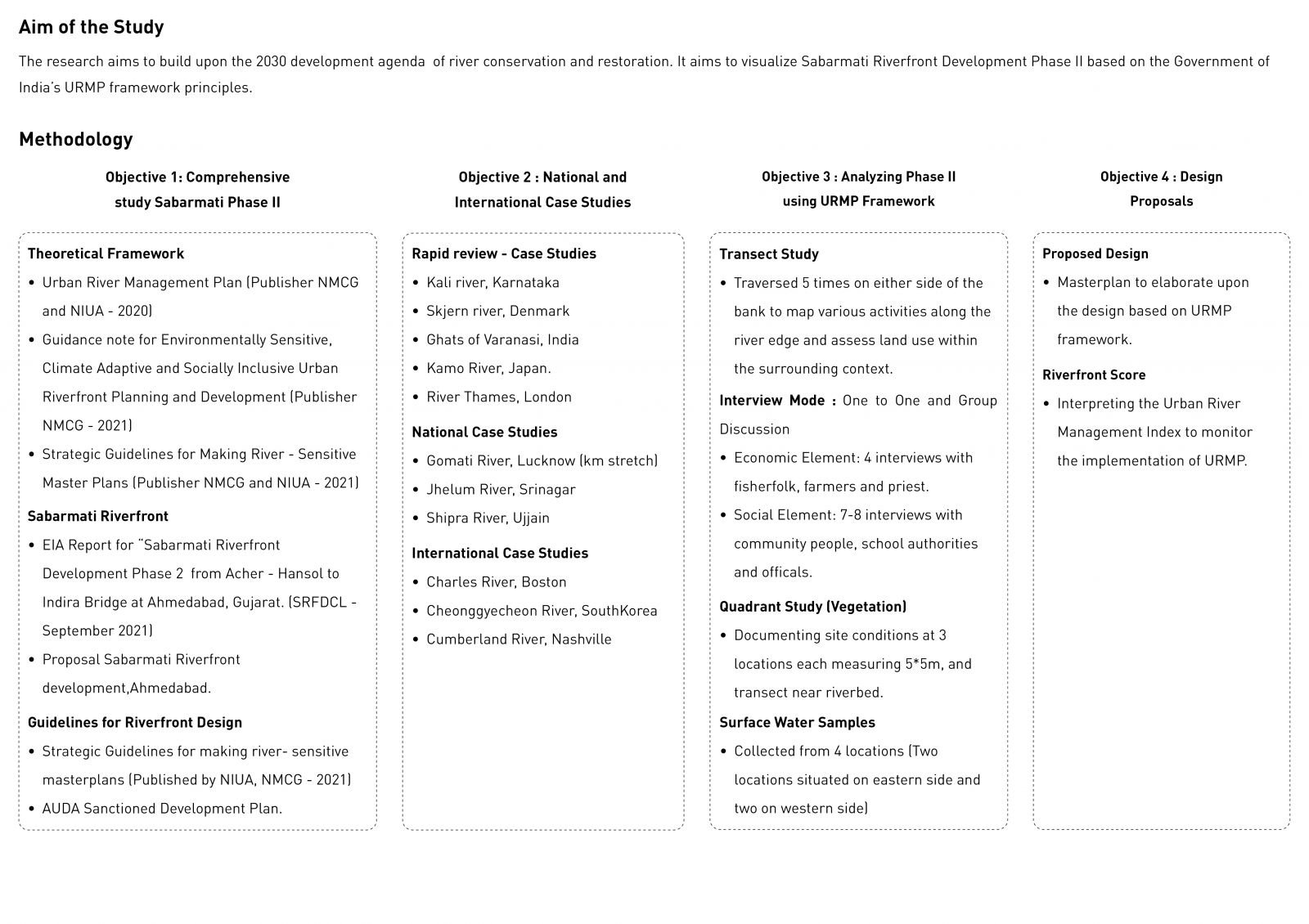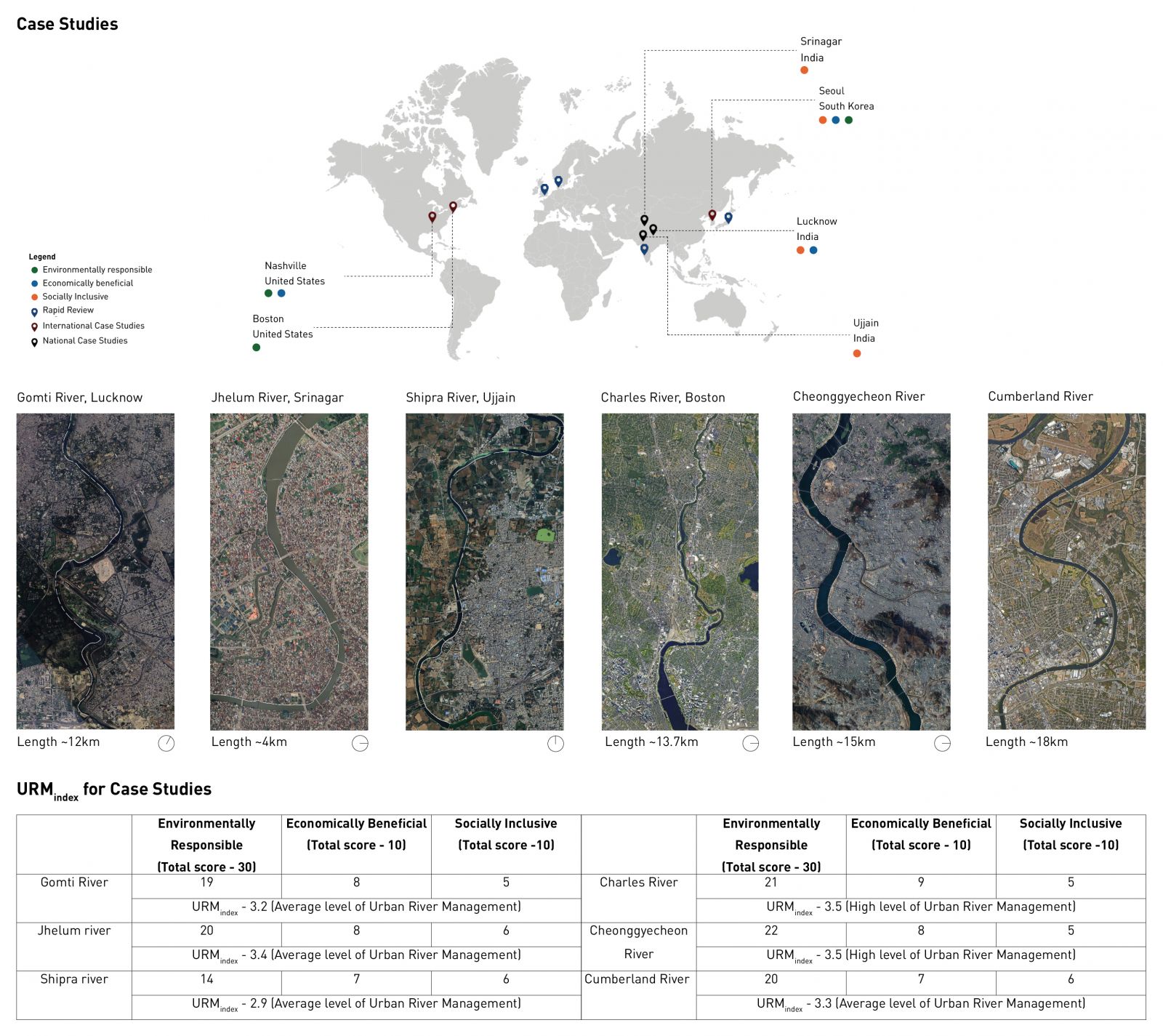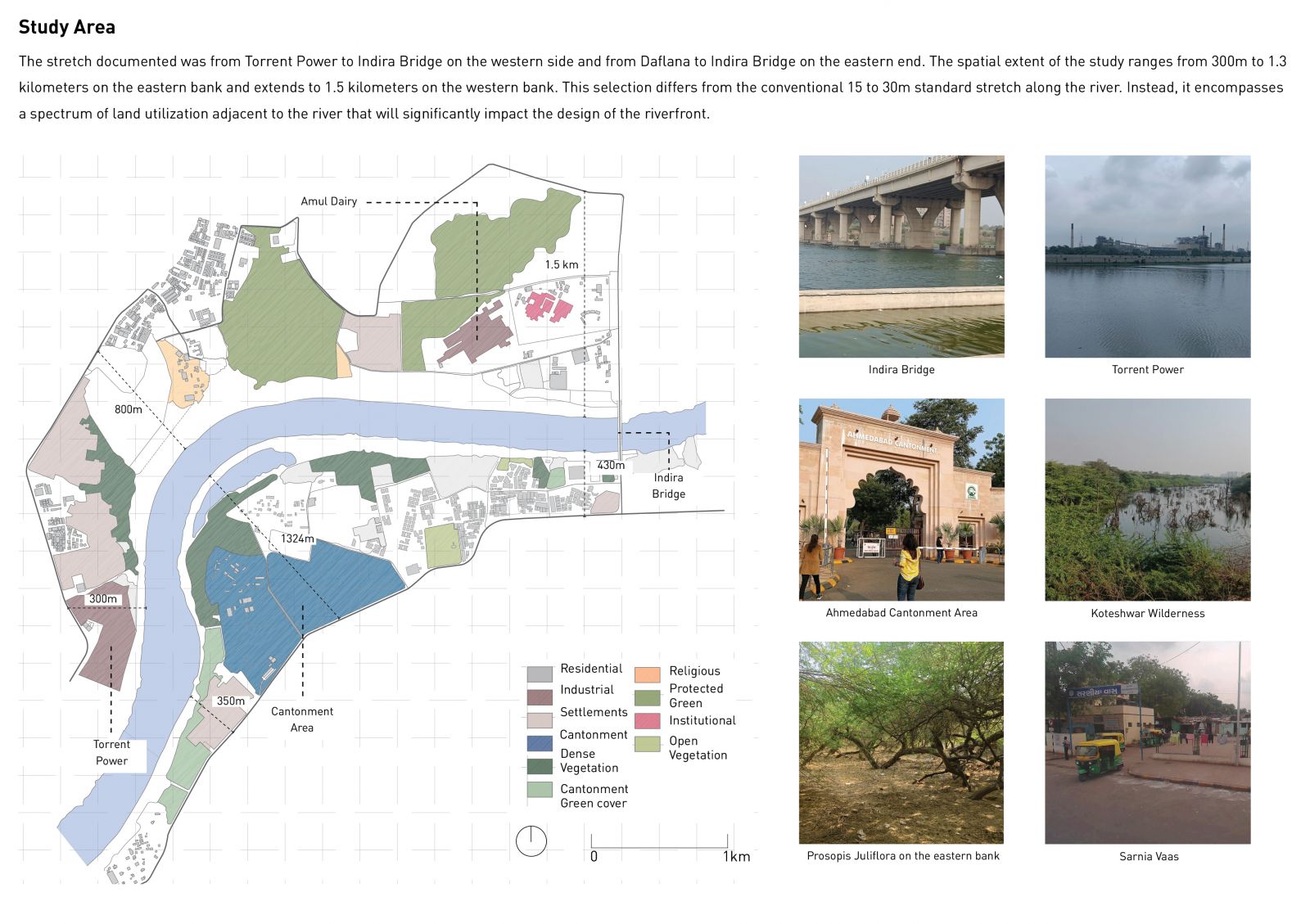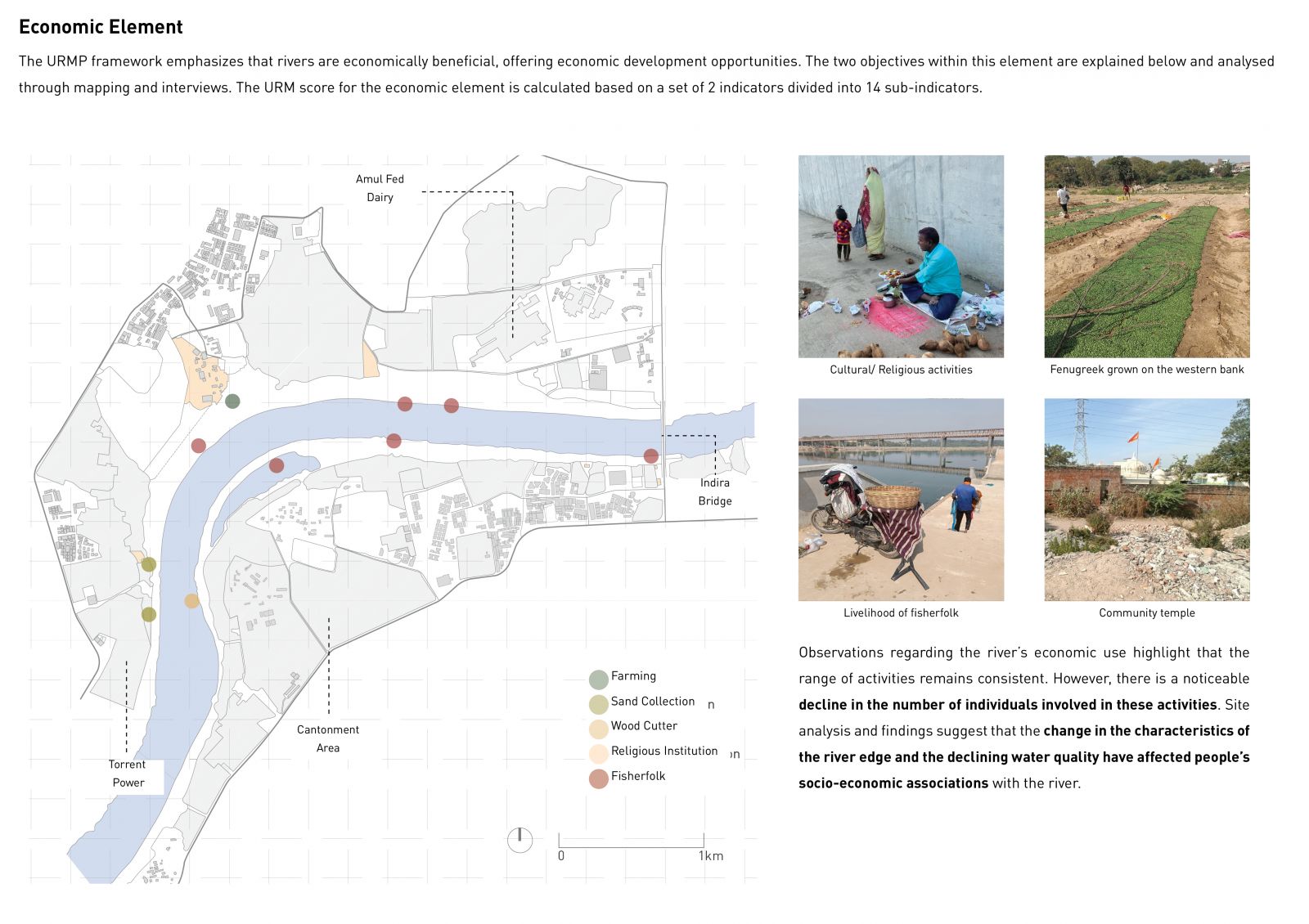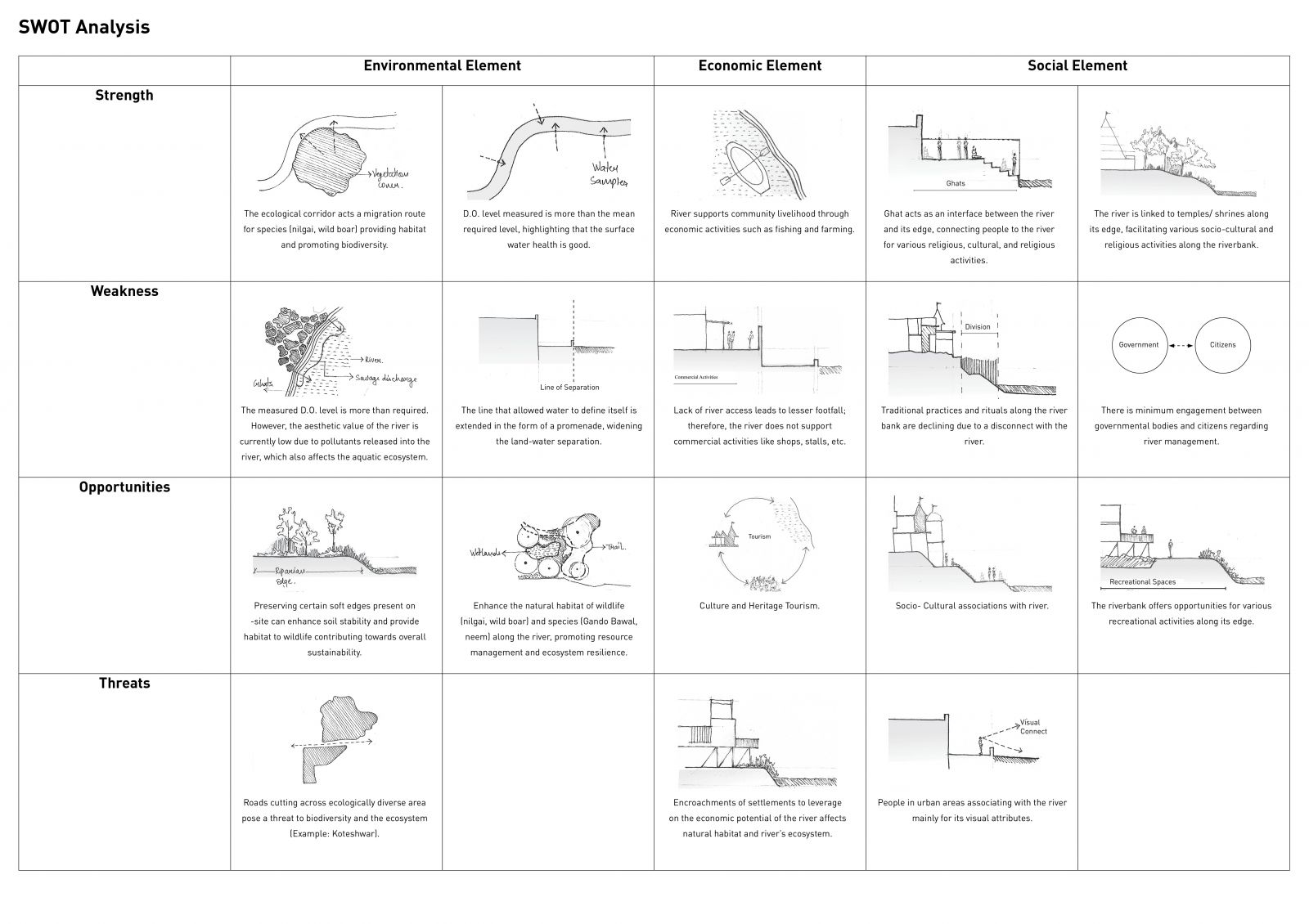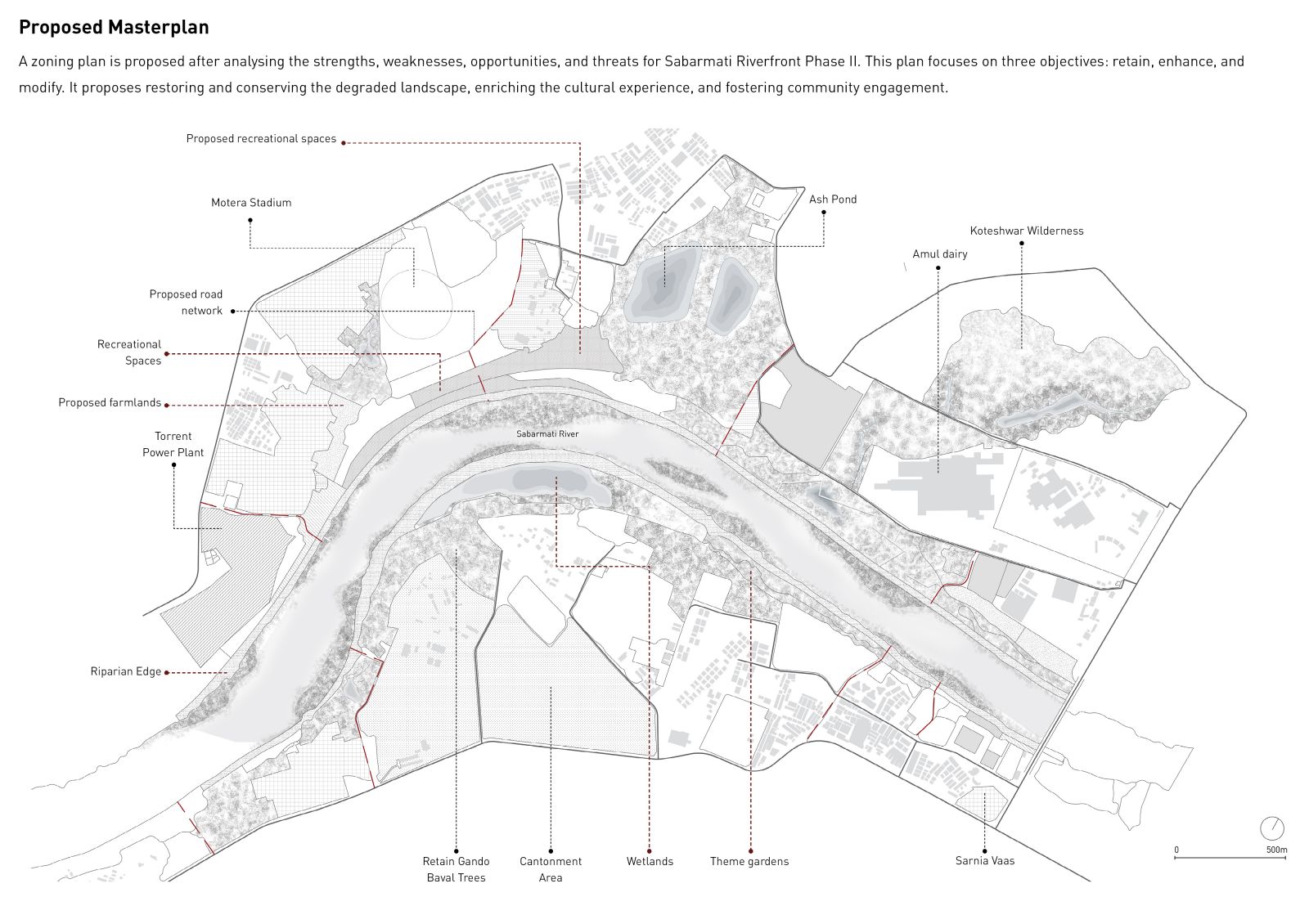Your browser is out-of-date!
For a richer surfing experience on our website, please update your browser. Update my browser now!
For a richer surfing experience on our website, please update your browser. Update my browser now!
Rivers are considered an essential natural resource, crucial in civilization and ecosystems. They have led to the growth of cities and hold a significant place in people's lives, culture, and traditions. However, due to urbanization, rivers have become polluted, and the socio-cultural relationships that people once had with rivers are now forgotten, thus changing the perceptions of rivers within a city. In recent years, there has been a focus on urban river management, encompassing ecological, economic, and social aspects as guiding principles. This research aims to build upon the concept of river restoration and conservation in the context of the Sabarmati River through the lens of sustainability. The methodology involves defining the study area based on the existing regulations and guidelines about waterfront development. The understanding of literature study and framework was used to examine the ecological, economic, and socio-cultural perspectives of riverfront development. Drawing upon various typologies of riverfront development through case studies, the research investigates their role in shaping its respective context. The process further analyses the Sabarmati Riverfront Phase II through on-site field surveys and stakeholder interviews to gather their socio-cultural perceptions about rivers and riverfronts. In addition, the research draws inferences on the economic and ecological aspects of the river edge in the context of rapid urbanization through transect studies substantiated by photographic essays. The analysis aims for a sustainable approach to riverfront design based on the three pillars of sustainability: ecology, economics, and socio-cultural factors. Alternative designs, created in consultation with key stakeholders, will be explored through detailed site assessments while taking cues from Phase I and referring to the Sabarmati Riverfront proposed Phase II design. The design will be based on the principles of ecological reliability, economic benefits, and social inclusivity. Implementing these principles cohesively can significantly change how rivers are perceived and help reconnect them with cities through riverfront development.
